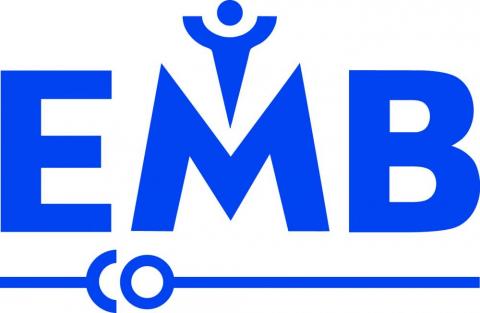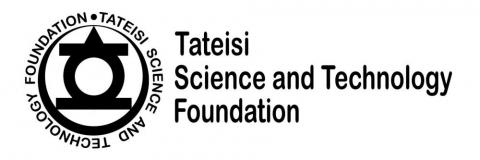Title: Breath Analysis for Early Detection and Rapid Diagnosis of Diseases for Preventive Medicine
Early detection and rapid diagnosis of diseases have drawn much attention in today’s medical practice. Many diseases such as cancer may have a high chance of full recovery if detected at early stages. Breath analysis has received extensive interests because of its non-invasive nature as a highly feasible solution for individual or clinic’s practice of preventive medicine. Conventional gas analysis methods require examining the gas samples in the laboratory using either a gas chromatography-mass spectrometry (GC-MS) analyzer or a Fourier infrared spectrometer (FT-IR). Although GC-MS and FTIR offer relatively accurate results, they do not suit for monitoring an individual’s daily life since these instruments are bulky and the procedure is time-consuming. A light-weight device with fast and accurate detection is therefore ideal for gas analysis in detecting breath. The electronic nose (e-nose) offers an alternative for gas identification. The e-nose uses an array of sensors to acquire the specific response pattern for each type of gas and identifies this specific pattern for disease identification. The e-nose has recently been widely adopted for diagnosis, including dermal drugs, lung cancer, kidney disease, reproduction medication, diabetes, and asthma. Although e-noses are available in the market, the current products are still not popular owing to its massive volume and high cost regarding personal healthcare applications. This talk will introduce the development of miniaturized gas sensing circuits and systems based on e-nose principle. This enables real-time monitoring and rapid diagnosis of diseases. Gas sensors, interface circuits, system architecture, algorithms will be discussed.
Title: Charge-Sensing Circuits in Biomedical Applications
Low-noise current and charge sensing stages are pivotal in a large variety of biomedical circuits, spanning from electrochemical biosensors to photodetectors for visible and gamma radiation. In this tutorial some common design challenges and guidelines will be discussed, with special focus on front-end CMOS ASICs. Applicative examples will focus on diagnostics, both from the (apparently opposite) perspectives of nano-biosensors, leveraging molecular affinity (targeting the development of miniaturized and integrated with lab-on-chip microfluidics), as well as hospital-based medical imaging. The technical solutions to achieve mutual compatibility of sensitive detection circuits with large magnetic fields (a few Teslas) enabling multi-modal medical imaging and diagnostics (magnetic resonance and nuclear imaging) will be presented.
Title: MR-to-go: Portable NMR and ESR spectrometers for next generation point-of-care diagnostics
Methods based on the nuclear magnetic resonance and electron spin resonance (NMR and ESR) effect are amongst the most powerful diagnostic tools in the modern life sciences. While similar in their underlying physical principle, in the biomedical context, NMR and ESR can be used to obtain complimentary diagnostic information by detecting metabolites (NMR) and free radicals (ESR) that together can form a complete picture of the state of health of a patient.
Despite their great analytical power, until very recently, the spectrometer size and cost have prevented the use of NMR and ESR in portable, point-of-care applications. As highlighted by our group in [1], the use of integrated circuit technologies can help to drastically reduce the form factor of both NMR and ESR spectrometers. Here, while in the field of NMR a monolithic integration of the conventional spectrometer electronics is typically employed [2], in the field of ESR, the use of IC-technology has led to entirely new detection schemes such as the VCO-based detection proposed by our group in [3,4]. In addition to the utilized transceiver electronics, the performance of both NMR and ESR spectrometers is critically determined by the homogeneity of the utilized permanent magnet, because it defines the achievable spectral resolution, i.e. the ability of the spectrometer to resolve adjacent resonant peaks in the MR spectra.
In the proposed tutorial, we will first briefly motivate this line of research by introducing the audience to the analytical power of NMR and ESR using illustrative examples followed by a quick review of the inductive spin detection principle. In the main part of the tutorial, we will discuss the state of the art in monolithic NMR and ESR transceiver realizations and their impact on the spectrometer form factor and performance. The electronics oriented first part of the tutorial is followed by a more system-oriented view on portable NMR and ESR spectrometers, discussing the impact of the remaining spectrometer components on the achievable spectrometer performance, size and cost. Here, we will focus on possible optimization strategies of the required highly homogenous, permanent magnets and very recent approaches towards increasing the NMR sensitivity by hyperpolarization techniques.
The tutorial will close with a review of the current state of the art in portable NMR and ESR systems and an outlook on their potential use in point-of-care applications in personalized medicine.










.jpg)




.jpg)











